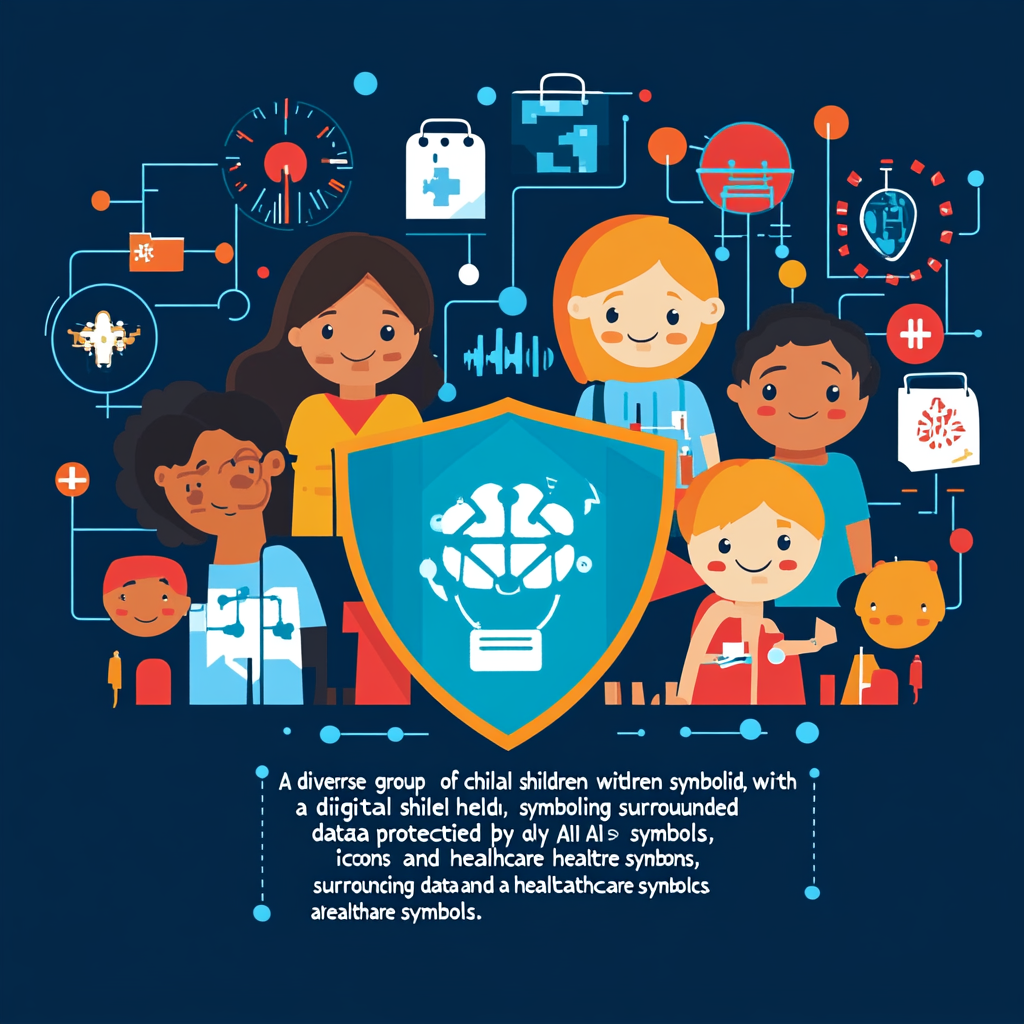
“Navigating Ethical and Practical Challenges of AI in Pediatric Medicine: A Systematic Review”
Exploring the Dance of AI and Pediatric Medicine: Ethics, Challenges, and Possibilities
Ah, the ever-evolving realm of pediatric medicine, where every little heartbeat, cough, and giggle counts. Now, sprinkle some Artificial Intelligence (AI) into the mix, and you have a deliciously complex concoction. The potential is buzzing like a pop quiz before summer vacation, but the challenges—oh boy, they’re like a rollercoaster ride with no seatbelt. Let’s dive in and explore this intriguing intersection.
The Baby Data Problem
First off, let’s talk about data. If you’ve ever seen a room full of toddlers, you know they come in all shapes, sizes, and personalities. Well, the same goes for kids in the medical world—there's a lot of variability. You can't just scoop up mountains of pediatric data like you would for adults: children are a minority in the healthcare system, an underrepresented demographic. It’s like trying to collect cranberries at a pumpkin patch; there are simply fewer of them, and they certainly don’t sit still long enough for a solid data collection.
The scarcity of comprehensive pediatric data leads to a classic conundrum when we try to train those fancy AI algorithms. Without enough examples to work from, the AI might just end up guessing. Talk about a game of darts with an eye patch on! And let’s not forget the rapid growth and development stages. You wouldn’t dress a baby in toddler clothes, right? Similarly, a model trained on one age group might flounder when it encounters another.
Ethics on the Playground
Now, here comes the heavy stuff: ethics. Ethics in pediatric medicine isn’t just a nice talking point at a conference; it’s a full-blown rollercoaster. Kids are incredibly vulnerable, and when we start talking about tech, the stakes get even higher.
Data Privacy: It’s like keeping their diaries under lock and key. Kids’ medical records are touchy subjects. Parents or guardians need to give informed consent, which sounds simple, but in practice, think of it like herding cats while explaining quantum physics. You can’t just walk in and get a signature; you have to navigate a maze of questions and concerns.
Informed Consent: Speaking of consent, how do you explain complex AI algorithms to a child—or even their parents—without turning it into a science lecture? Let’s face it; AI can sound as intimidating as a spaceship, and translating that into understandable terms is no walk in the park.
AI Biases: And there’s the biggie—bias. AI algorithms can inadvertently weave existing healthcare disparities into their fabric. Imagine a system that perpetuates unequal treatment. That’s a hard pill to swallow. It reminds us that our shiny AI toys need serious checks and balances before they’re unleashed on the playground.
The Growing Pains of Development
Ah, childhood! A time when kids are sprouting like beanstalks. The complexity of child development presents yet another hurdle. From giggling infants to grumpy teenagers, AI models must adapt quickly or risk becoming obsolete. It’s like trying to use a flip phone in an era of smartphones. By the time you get the hang of things, your model may need an overhaul.
Subjectivity in Assessments: Pediatric care often involves a lot of guesswork—it's like solving a mystery where the clues are given in whispers and giggles. Subtle developmental changes and behavioral cues play a huge role. Can AI read between the lines of a child’s mood swings after skipping a nap? Spoiler alert: it struggles. The subjective nature of clinical assessments adds another tricky layer to the already complicated AI cake.
The Gauntlet of Validation
Now, before you eagerly rush to slap AI on every pediatric chart, let’s discuss validation. The road to approval is a winding one, laden with pitfalls and bureaucratic hurdles. Without proper guidelines tailored for pediatric AI, everyone’s left winging it. Going through the labyrinth of regulations sounds thrilling—if you enjoy time spent in isolation while your AI model patiently waits in the corner.
Collaboration is key. Developers, clinicians, healthcare providers, and even lawmakers must waltz together, creating a symphony of clear guidelines to ensure that any AI hitting the pediatric floors is safe and effective.
Integrating with Medical Systems: No One Wants a Sore Thumb
Just as a puzzle piece must fit snugly in its spot, AI systems must integrate harmoniously with existing healthcare systems. Think of it as an intricate dance—one misstep can throw the whole routine off balance. Compatibility issues lead to data exchange headaches, which nobody wants when a child’s health is on the line.
AI adoption means training healthcare providers, too. A well-informed staff can use AI effectively, turning the technology from a gimmick into a life-saving tool. Equipping the future custodians of children’s health with AI knowledge is as critical as ensuring they understand how to read a thermometer.
Current Hues and Future Shades
Amid the challenges, let’s not ignore the current and upcoming applications that make pediatricians’ hearts flutter with excitement. Ranging from radiology to gastroenterology, AI is infiltrating those specialized spaces as assistive tools—not replacements. They enhance diagnostic accuracy and help identify significant conditions like diabetes, pneumonia, and IBD before they hold the child hostage.
However, this still requires meticulous consideration. Take telehealth as an example—convenient for parents, yes, but if mismanaged, it could harm the essential clinician-patient rapport. Ongoing research is like a beacon, urging us to adapt AI models to fit the ever-changing tapestry of children’s development and ensure they remain relevant, effective, and attuned to the nuances of youth.
Wrapping It Up
So, there you have it—the vast world of AI in pediatric medicine. A promising landscape filled with challenges that would leave an unprepared traveler lost in the wilderness. Ethical considerations echo like whispers in a crowded room, cautioning us to tread carefully. Yet, the potential to enhance care and outcomes for the littlest patients ignites the imagination, urging us to innovate and progress.
Want to stay up to date with the latest news on neural networks and automation? Subscribe to our Telegram channel: @ethicadvizor

